When is the Best Time to Climb Kilimanjaro?
Planning your Mount Kilimanjaro climb involves considering various factors such as temperature, visibility, trail traffic, difficulty, and safety. The most crucial factor, however, is the weather. Kilimanjaro, located in an equatorial climate, experiences two main seasons: wet and dry. The wet seasons, from April to May and November, bring unpredictable rain and challenging conditions. In contrast, the dry seasons, from December to mid-March and mid-June to the end of October, provide ideal climbing conditions with clear skies, breathtaking views, minimal rainfall, and ample sunshine.
The best times to climb Kilimanjaro are during the peak climbing seasons of July-August-September and January-February. These months coincide with popular travel times such as summer holidays and Christmas, aligning with optimal weather conditions. Rainy periods, especially in April, May, and November, are less favorable due to increased rainfall, muddy trails, and slippery rocks. However, these months can be ideal for landscape photographers who seek the dramatic beauty of Kilimanjaro’s snow-capped peak and a quieter trail experience.
Although Kilimanjaro is accessible year-round, it's best to avoid April and November due to heavy rainfall and heightened trail hazards. Weather can be unpredictable throughout the year, so while the optimal climbing months generally offer clear skies and minimal rain, conditions can change. Prioritizing safety and selecting the best climbing window based on current weather conditions is essential for a successful ascent.
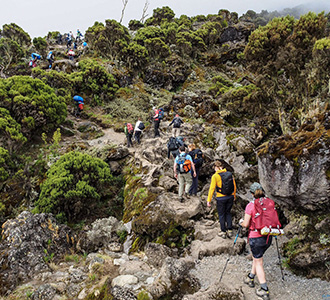
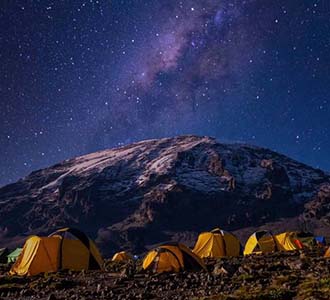
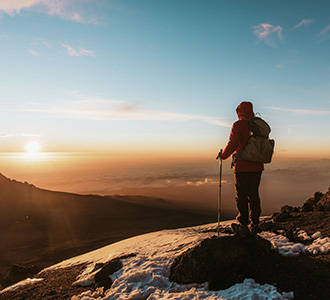
Optimal Kilimanjaro Climbing Times: A Seasonal Guide
January - March
The period from January to early March generally offers ideal conditions for climbing Mount Kilimanjaro. During these months, trekkers can expect mostly dry and clear days with excellent visibility. Although this time falls within the high season, the trails are less crowded compared to the peak months of June through September. This period strikes a balance between fewer crowds and favorable weather, with the added adventure of potentially encountering snow at elevations above 14,000 feet.
From mid-January to mid-March, the weather is typically balanced with dry days and occasional rain. This makes it a prime climbing window. However, as late March approaches, the likelihood of increased rain grows, signaling the onset of the long rainy season. This time is ideal for climbers seeking balanced weather and a quieter experience.
April - May
As March transitions into April and May, weather conditions shift significantly. Early March may still be pleasant, but by April, rains often begin, leading to muddy trails and cloudy skies. This period marks the long rainy season, making it less suitable for climbing. However, experienced trekkers who are prepared for challenging conditions and unpredictable weather might still choose to trek during this time. The north side of Kilimanjaro is recommended for those who prefer this period.
June - September
June through September is the peak climbing season for Mount Kilimanjaro. This period is characterized by generally excellent weather with mostly dry days. Despite the favorable conditions, the trails are busier, particularly in July and August. Occasional showers may occur, especially in forested regions, and routes can be crowded around full moons. This is the ideal time for climbers seeking optimal weather and willing to navigate busier trails.
October - November
October and November present a quieter alternative to the peak climbing months. Short rains typically arrive in November but are generally less persistent than those in April and May. During this period, the trails are less crowded, providing a more peaceful climbing experience. Opting for routes like Rongai or the Northern Circuit can help minimize rainfall. This time is perfect for those seeking solitude and experienced trekkers who are comfortable with wet weather conditions.
December - Mid-January
December through mid-January marks the second peak season, coinciding with the Christmas and New Year holidays. Although this period can experience rain and thick clouds, the mountain sees a high volume of climbers. This season is suitable for those willing to contend with higher traffic for holiday climbs and who are prepared for variable weather conditions.
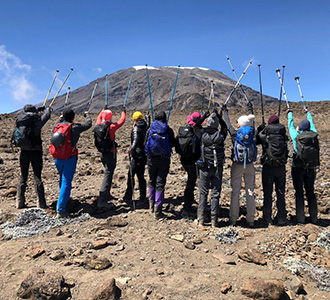

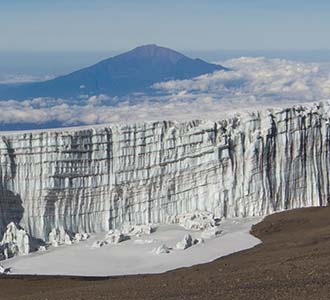
Kilimanjaro Temperature Overview
Mount Kilimanjaro features a range of temperatures across its four distinct climatic zones:
Rainforest Zone (800m-3,000m):
- Lush greenery and high humidity characterize this zone.
- Temperatures average between 12-15°C, reaching 20-25°C during the day at 2,900m.
- Climbers typically start their ascent here, depending on their chosen route.
Low Alpine Zone (3,000m-4,200m):
- Transitioning to a semi-arid landscape with less vegetation.
- Expect temperatures between 5-10°C, peaking at 15-20°C during the day at 3,600m.
- Climbers generally spend one or two days in this zone.
High Alpine Zone (4,200m-5,000m):
- Desert-like conditions characterize this zone, which serves as the final preparation area before reaching the summit.
- Temperatures are around freezing at 5,000m, but daytime conditions are relatively warm.
- Climbers usually spend their fourth and fifth days here.
Glacial Zone (Above 5,000m):
- The summit of Mount Kilimanjaro is located in this zone, with temperatures averaging around -6°C.
- Summit attempts generally start at midnight to reach Uhuru Peak by dawn.
- Nighttime temperatures can drop to -20°C or lower, with strong winds.
Weather Conditions
Mount Kilimanjaro experiences distinct rainy and dry seasons:
Best Time to Climb Kilimanjaro:
- The optimal climbing periods are from January to early March and from June to October.
- These seasons offer clear skies, excellent visibility, and comfortable hiking conditions.
Rainfall Patterns:
- Kilimanjaro has two main rainy seasons:
- Long rains: End of March through May.
- Short rains: November.
- April and November typically record the highest rainfall, although variations can occur.
- The rainy season, especially from mid-March to May, can result in wet, stormy, and muddy conditions on the mountain. Climbers should be prepared with appropriate wet-weather gear, even during the dry season.



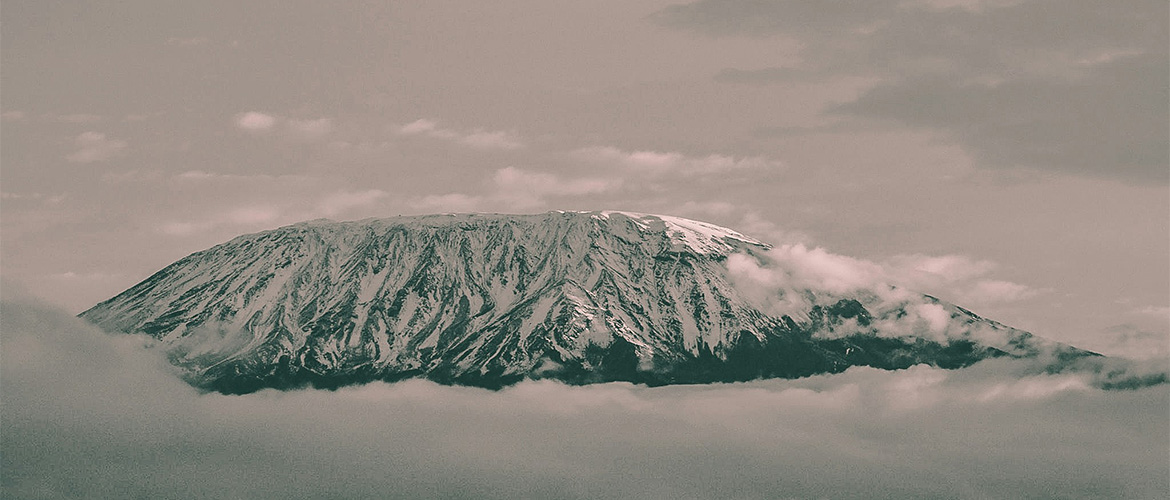
Comments